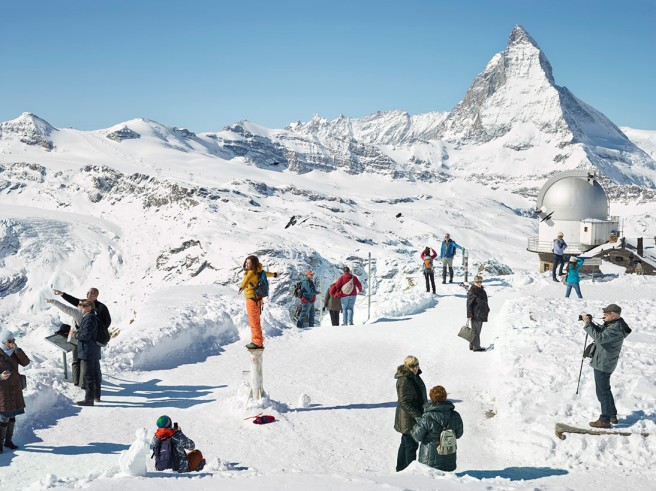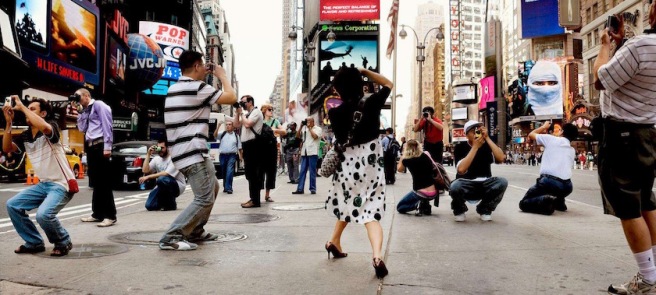In the end I have decided against my idea as proposed in Further Development of Assignment 5 – Documentary where I interacted directly with the tourists as I was finding it very stressful asking tourists who were complete strangers whether I could take their picture. I did come up with a method for asking the tourists and introducing myself to them which helped. However, ultimately I felt I was forcing the issue and I envisaged I would be more comfortable with something less direct.

I had already shot one photograph using a less direct method of interaction with the tourists which helped me to make up my mind. Also after conducting more research/looking back on old research on photographers who tackle the subject of tourism I realised this method not only suited me better but also had a good rhetoric behind it. For example I looked back at some research I had conducted on the work of Simon Roberts. Although the main subject of the post was his project We English (2008), I extended this research in the latter part of the post to Sight Sacralization (2016). I was glad I had done this because it enabled me by looking back at this to renew my interest in the performance aspect that tourists (unconsciously or otherwise) undertake while taking pictures/selfies. Another, more recent post looking at the work of Peter Funch in particular was very inspiring retrospectively too.

The method I would be working in for this new direction for Assignment 5 consisted of myself photographing the tourists photographing the landmarks/hotspots but in a manner that made the tourists become as much of a spectacle as the landmarks. To do this I would create composites of multiple images with the same framing, in the style of Peter Funch. The final composites would be composed in such a way that it was obvious picture/selfie taking was the main activity occurring at these hotspots.
The next part to my assignment, which would give the project a much more personal element, was brought about by a discussion with my fellow student Bryn in which I described my struggles conceptualising my fifth assignment to him. He had seen my post on Peter Funch and suggested: ‘I wondered if you had thought about being the performer in front of the camera. Maybe visiting these tourist hotspots at a quiet time. Set up the camera as an interval shot and perform all the selfie and tourist poses before compositing it into a single image.’ While I had already thought of compositing tourists into single images, I hadn’t thought of doing something similar with myself! I took this suggestion on board and came up with a hybrid plan. Firstly I would carry out the assignment as described in my method above and then I would plan to return to the hotspots, retracing the tourists’ footsteps by posing similarly to how they posed in the same scene except all the poses would be performed by me in the follow-up photographs. I would do this early in the morning (when there were no tourists around). Finally I would be looking to combine the two types of photographs for each scene into a diptych which I could see working well together.
References:
Funch, P. (2006) Babel Tales. [online] peterfunch.com. Available at: http://peterfunch.com/works/babeltales/ [Accessed 30/4/2018].
Roberts, S. (2007-2008). We English. [online] Simoncroberts.com. Available at: https://www.simoncroberts.com/work/we-english/ [Accessed 30/4/2018].
Roberts, S. (2016). Sight Sacralization. [online] Simoncroberts.com. Available at: https://www.simoncroberts.com/work/sight-sacralization/ [Accessed 30/4/2018].

Glad you feel more settled on your strategy Johnathan and looking forward to seeing the results.
B.
LikeLike